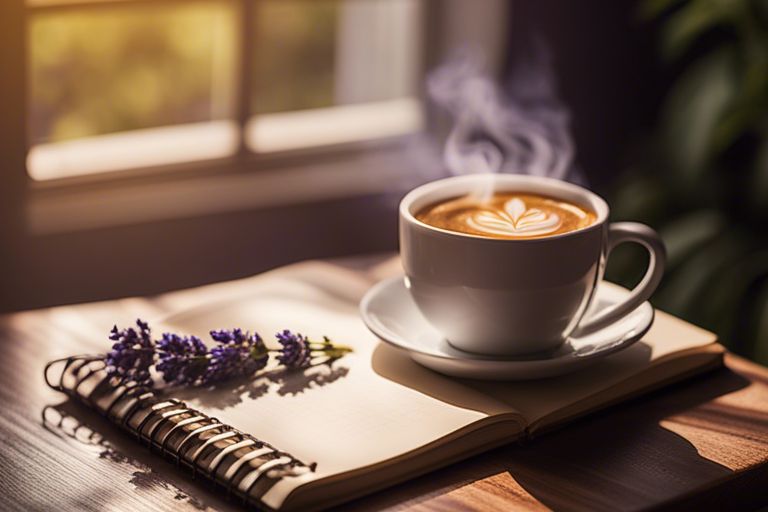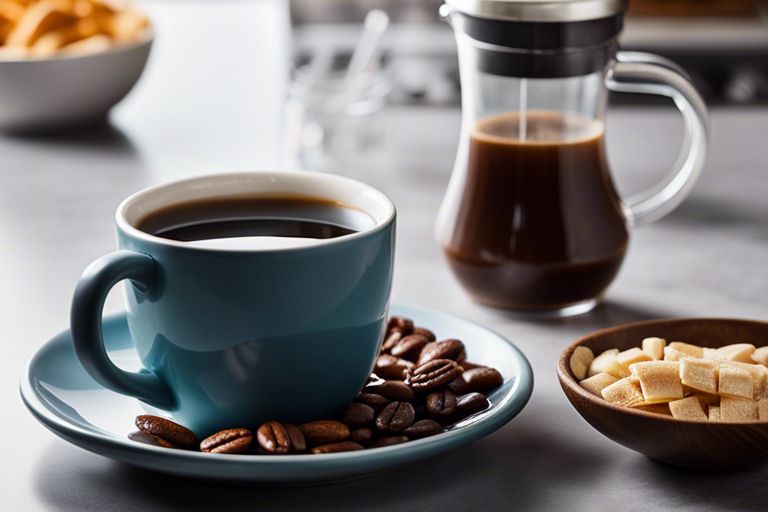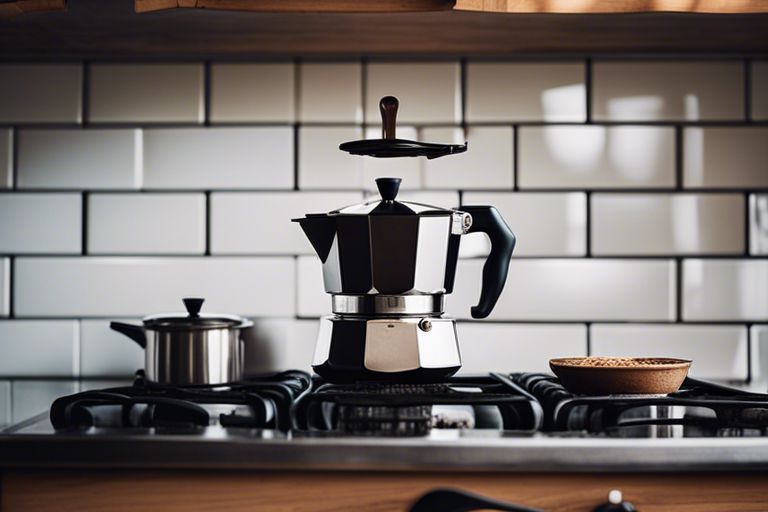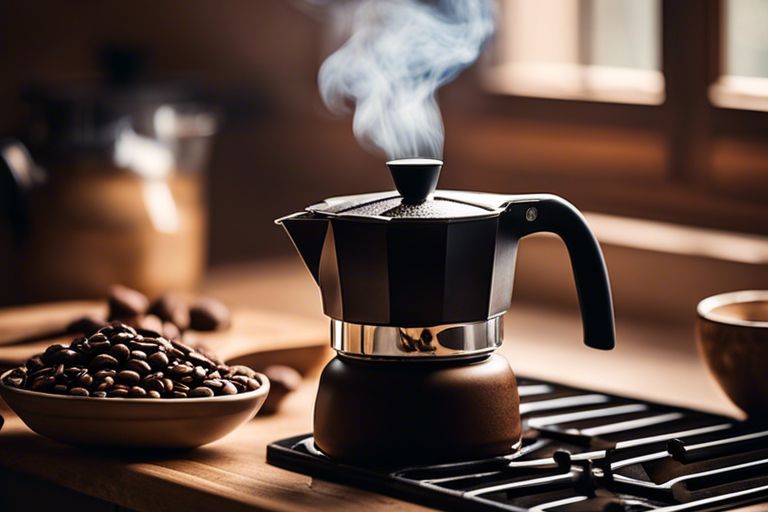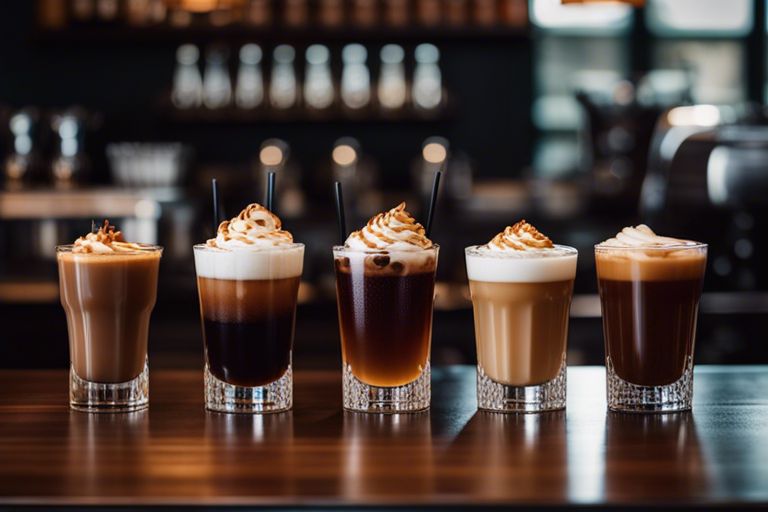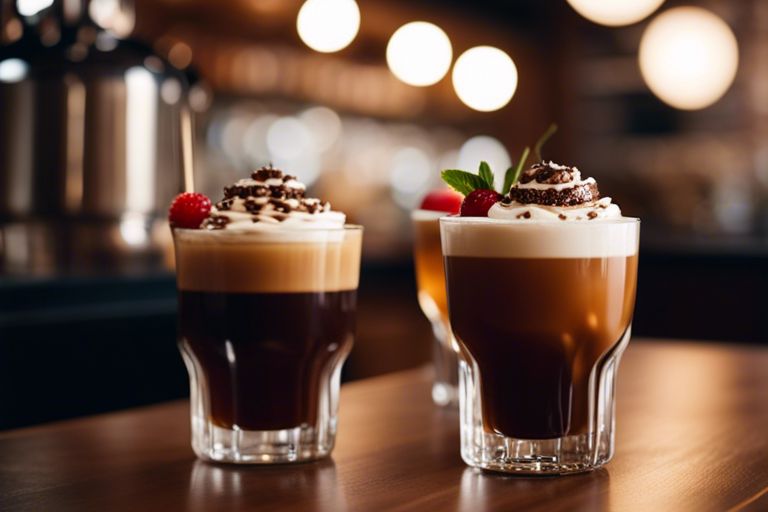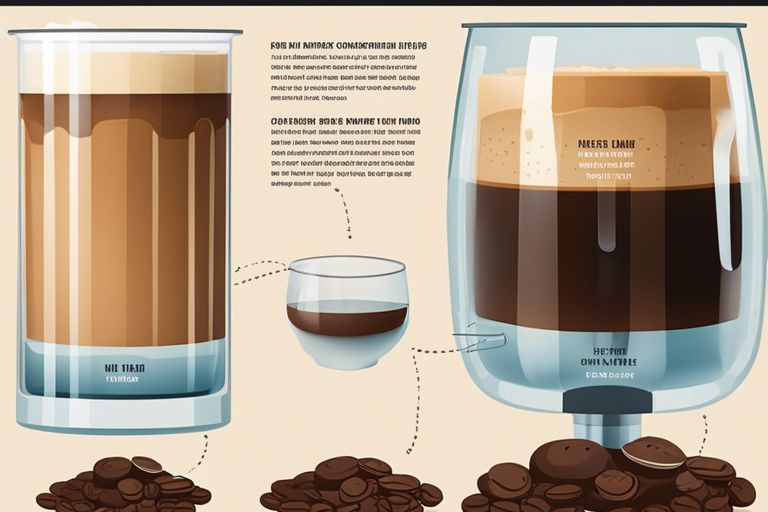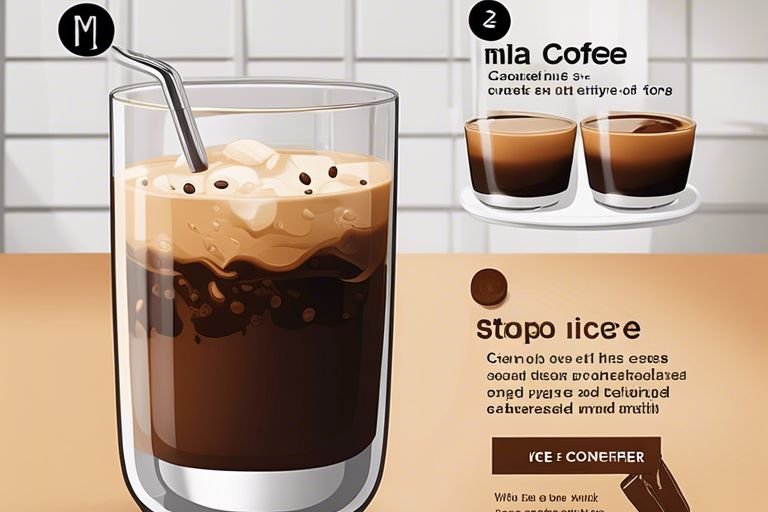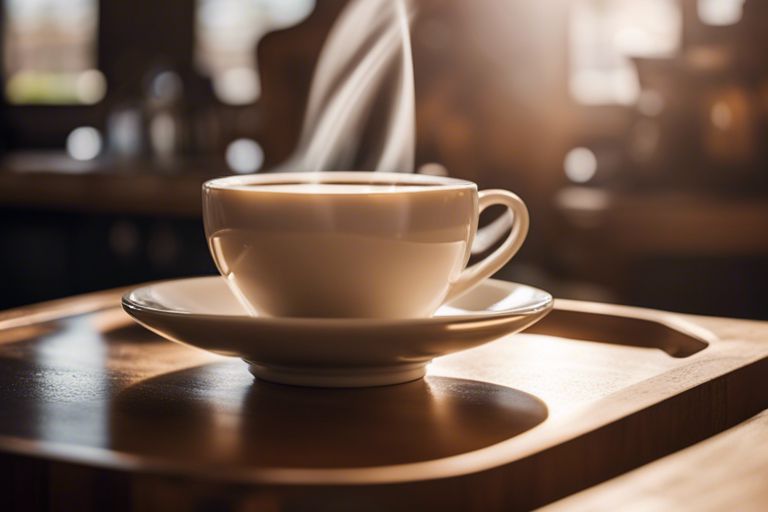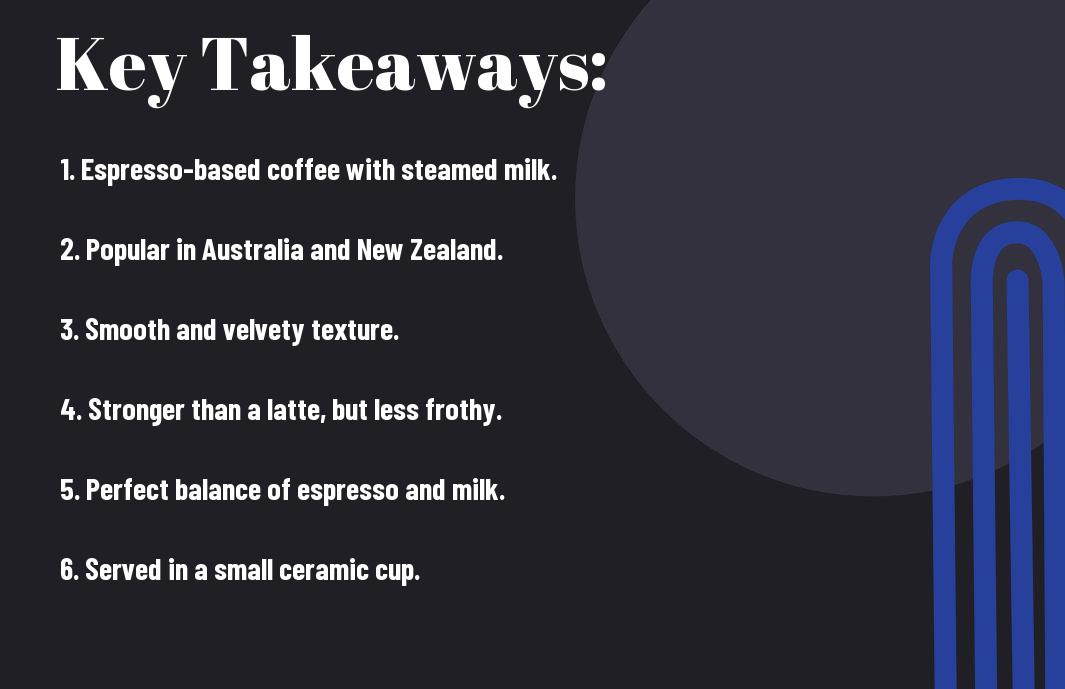Latte, a popular coffee choice, often gets confused with its smaller cousin, the macchiato. Understanding the difference between these two espresso-based drinks is necessary for any coffee enthusiast. Let’s explore the world of coffee and unravel the distinct characteristics that set a macchiato apart from a latte.
Key Takeaways:
- Espresso vs. milk:
A macchiato is espresso “stained” with a small amount of steamed milk, while a latte is made with a lot of steamed milk and a shot of espresso. - Texture:
The macchiato has a stronger taste due to the espresso-to-milk ratio and a more intense flavor, while the latte is smoother and creamier. - Serving size:
Typically, a macchiato is served in a small cup, while a latte is served in a larger cup due to the higher milk content.
The Origins of Macchiato and Latte
A Brief History of Macchiato
Before we examine into the differences between a macchiato and a latte, let’s explore the origins of these popular coffee drinks. The word “macchiato” comes from the Italian word “macchiare,” which means “to stain” or “to mark.” This simple espresso-based beverage is believed to have originated in Italy, where a shot of espresso is “stained” with a small amount of steamed milk or foam.
The Roots of Latte
Latte, on the other hand, has a bit of a more complex history. The term “latte” is short for “caffè latte,” which means “milk coffee” in Italian. This drink consists of a shot of espresso topped with steamed milk and a thin layer of foam. While the exact origins of the latte are disputed, it is believed to have gained popularity in Italy before spreading to coffeehouses around the world.
Macchiato, on the other hand, is a simpler concoction where a shot of espresso is “stained” with just a dash of milk. This results in a stronger, bolder coffee flavor with just a hint of creaminess.
Coffee-to-Milk Ratio
Macchiato’s Strong Coffee Flavor
Coffee is the star of the show in a macchiato, with just a small amount of milk “staining” the rich espresso. The coffee-to-milk ratio in a traditional macchiato is heavily skewed towards the coffee, creating a robust and intense flavor profile.
Latte’s Balanced Blend
Flavor in a latte is a delicate dance between the boldness of espresso and the creaminess of steamed milk. The coffee-to-milk ratio in a latte is more balanced compared to a macchiato, resulting in a smoother and creamier taste that is favored by those who enjoy a milder coffee experience.
Blend of espresso and velvety steamed milk in a latte creates a harmonious union of flavors that is both comforting and satisfying. The milk helps to mellow out the intense espresso, providing a well-rounded and indulgent beverage for coffee enthusiasts.
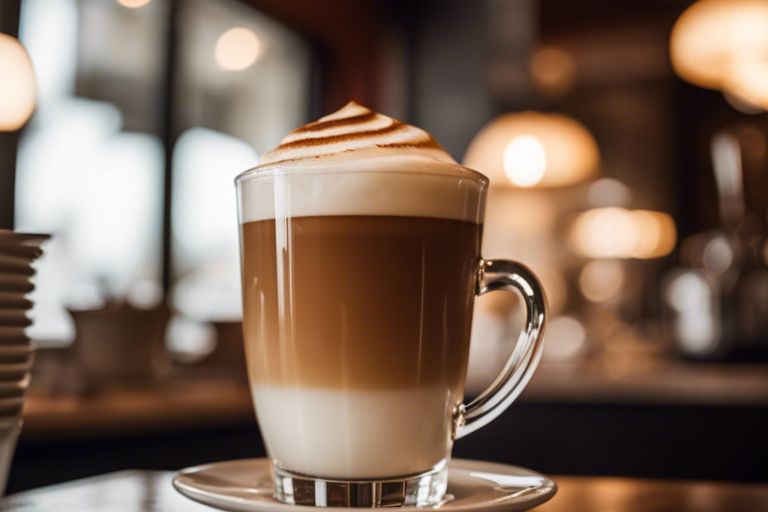
Texture and Consistency
Macchiato’s Thick, Rich Foam
One defining characteristic of a macchiato is its thick, rich foam that sits atop the concentrated espresso. This foam is created by steaming the milk to a velvety texture and spooning it gently on top of the espresso shot. The result is a layered drink with a strong espresso base and a creamy, foam top that provides a delightful contrast in texture.
Latte’s Smooth, Velvety Texture
To contrast, a latte boasts a smooth, velvety texture that is achieved by steaming the milk to create microfoam. This microfoam is then poured over a shot of espresso, creating a creamy and well-integrated drink. The milk in a latte is primarily used to complement the espresso, resulting in a balanced flavor profile that is both comforting and indulgent.
For instance, the steamed milk in a latte is carefully poured into the espresso in a way that allows for beautiful latte art to be created on the surface. This attention to detail not only enhances the visual appeal of the drink but also showcases the skill and expertise of the barista in crafting a perfectly balanced latte.
Flavor Profiles
Macchiato’s Bold, Espresso Taste
The macchiato is known for its bold and intense flavor profile. The name ‘macchiato’ actually means ‘stained’ or ‘marked’ in Italian, referring to the way the espresso is marked with just a splash of steamed milk. This results in a rich and strong coffee flavor that is favored by those who enjoy the pure taste of espresso.
Latte’s Milder, More Subtle Flavor
Subtle and smooth, the latte offers a more mellow coffee experience compared to the macchiato. With a higher ratio of steamed milk to espresso, the latte has a creamier texture and a sweeter taste. This makes it a popular choice for those looking for a coffee drink that is easy to sip and enjoy.
Flavor-wise, the latte’s milkier composition helps to mellow out the intensity of the espresso, creating a harmonious balance of flavors that is both comforting and satisfying.
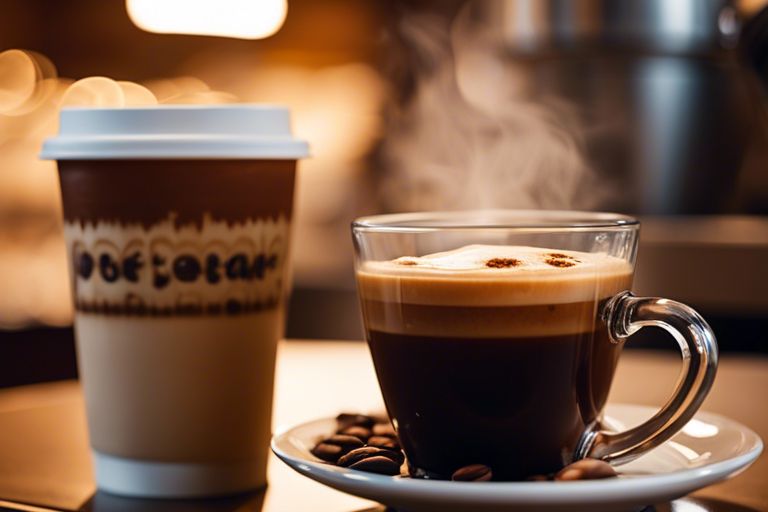
Preparation Methods
Macchiato’s Traditional Italian Approach
Unlike its American counterpart, the traditional Italian macchiato is prepared by adding a small amount of milk foam or steamed milk to a shot of espresso. This method allows the bold and rich flavor of the espresso to shine through, with just a touch of creaminess from the milk.
Latte’s Versatile Brewing Techniques
On the other hand, lattes are known for their versatility in brewing techniques. While the classic latte consists of espresso and steamed milk, variations like flavored syrups, alternative milk options, and decorative latte art have made this drink a favorite among coffee enthusiasts.
Macchiatos may be straightforward and simple, but lattes offer a blank canvas for baristas to showcase their brewing skills and creativity. From the temperature of the milk to the ratio of espresso to milk, each element of a latte can be adjusted to suit the preferences of the drinker.
Cultural Significance
Macchiato’s Italian Heritage
All macchiatos have a strong tie to Italian coffee culture, where they are enjoyed as a brief and potent pick-me-up during the day. The word “macchiato” in Italian means “stained” or “spotted,” describing the way the espresso is “stained” with a small amount of milk. Unlike the Americanized versions of macchiatos, which can be laden with syrups and extra flavorings, traditional Italian macchiatos are simple and straightforward, highlighting the quality of the espresso. Italians take pride in their coffee, valuing the rich and concentrated flavors of a well-crafted espresso shot in their macchiatos.
Latte’s Global Popularity
Any discussion about coffee culture around the world would be incomplete without mentioning the latte. This creamy and comforting drink has garnered a global following, becoming a staple in coffee shops worldwide. The latte’s popularity can be attributed to its versatility, as it can be easily customized with different types of milk and flavorings to suit individual preferences. In many countries, the latte has become synonymous with the modern coffee experience, often enjoyed as a leisurely indulgence rather than a quick caffeine fix.
Macchiatos, on the other hand, have a more niche appeal, appreciated by those who prefer a stronger and bolder coffee flavor. While the latte continues to dominate the global coffee scene, the macchiato maintains its status as a classic and authentic representation of Italian espresso culture.
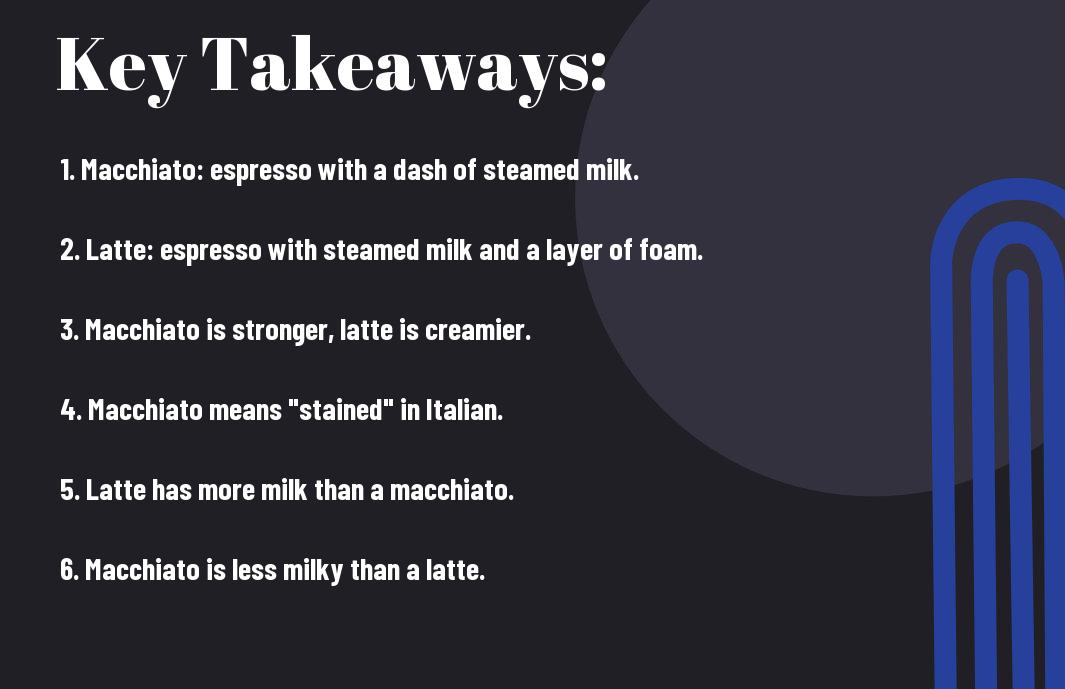
Conclusion
The distinction between a macchiato and a latte lies in the ratio of milk to espresso. A macchiato has a higher concentration of espresso with just a “stain” of milk, while a latte is mostly steamed milk with a shot of espresso. Understanding this subtle difference can help coffee enthusiasts order their preferred drink with confidence.
In the world of specialty coffee, knowing the nuances between different types of drinks is important. Whether you enjoy the boldness of a macchiato or the creaminess of a latte, being informed about the distinctions can enhance your coffee-drinking experience. So next time you visit a café, remember the difference between a macchiato and a latte, and savor every sip accordingly.
FAQ
Q: What is a macchiato?
A: A macchiato is a shot of espresso with a small amount of milk or foam added to “stain” the coffee.
Q: What is a latte?
A: A latte is a coffee drink made with espresso and steamed milk, topped with a small amount of foam.
Q: What is the main difference between a macchiato and a latte?
A: The main difference is in the ratio of espresso to milk; a macchiato has more espresso and less milk compared to a latte.
Q: How is a macchiato served?
A: A macchiato is typically served in a small espresso cup, showcasing the strong espresso flavor with just a touch of milk.
Q: How is a latte served?
A: A latte is served in a larger cup or glass to accommodate the espresso, steamed milk, and foam layers, creating a balanced and creamy texture.
How much caffeine is in a cup of coffee
Unlocking the Mystique – Exploring the Rich Flavor Profile of Black Coffee
The Ultimate Guide to Brewing the Perfect Cup of Black Coffee at Home
Health Benefits Unveiled – How Black Coffee Boosts Your Well-being
From Bean to Cup – The Fascinating Journey of Black Coffee Production

